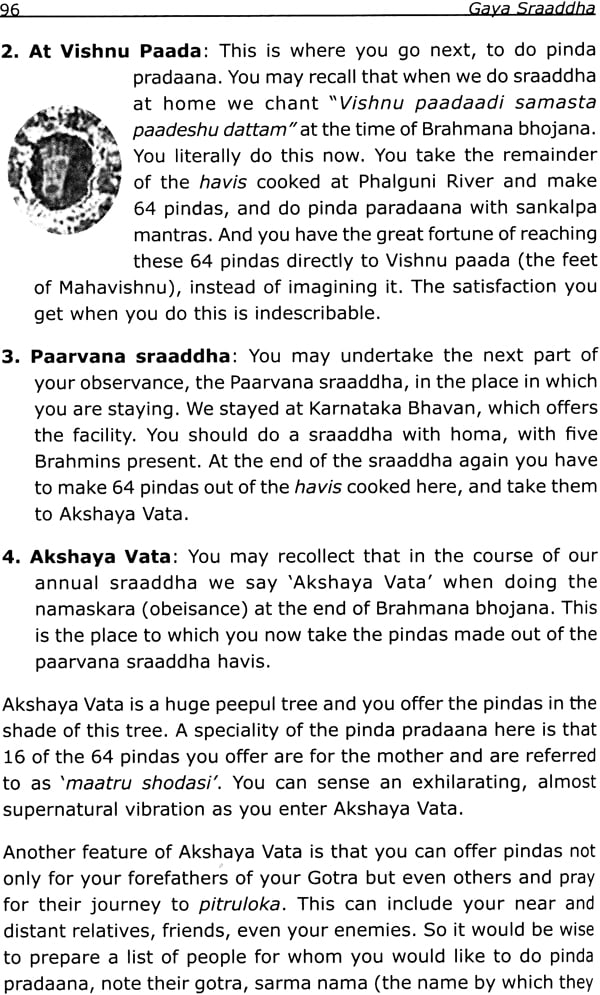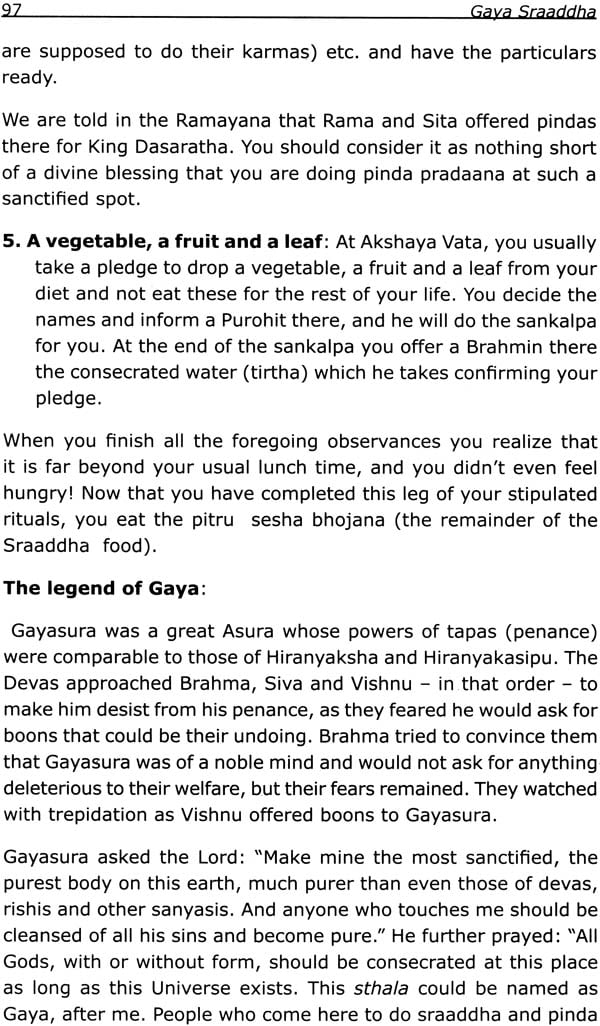
The Great Hindu Tradition (An insight into Vedic Principles, Sastras and Heritage)
Book Specification
| Item Code: | NAK457 |
| Author: | V.S.Kumar |
| Publisher: | Sri Sarma Sastrigal, Chennai |
| Language: | English |
| Edition: | 2015 |
| ISBN: | 978818465484 |
| Pages: | 239 (12 Color & Throughout B/W Illustrations) |
| Cover: | Paperback |
| Other Details | 9.0 inch X 6.0 inch |
| Weight | 380 gm |
Book Description
S Swaminatha Sarma is now known as Sarma Sastrigal and affectionately addressed as Sarmaji by his friends. He hails from Kumbakonam.
He learnt Veda from his father Brahma Sri Srinivasa Sastrigal. Later Sriman Sankarji, his spiritual Guru, guided him to understand our age old tradition and the fundamentals of our Dharma Sastras.
Sarma Sastrigal, now 63, devotes his full time in the noble pursuit of disseminating the knowledge of our scripts. He teaches several groups of interested people the philosophical, conceptual as well as practical aspects of our scriptures.
It is likely that your curiosity about our Sanatana Dharma and interest in our rituals made you reach out for this book; it is also likely that you are moved by a desire 'to do the right thing' as en- joined by our Sastras. 'I have now come to that age when 1 must start getting spiritual' could be a thought in some of you. 'How is spirituality connected to rituals?' could be another question in your mind.
This book is born out of many such queries that have been posed to me by well-meaning people, genuinely interested in knowing more about our Dharma.
My responses and explanations have often struck the querists as logical and sometimes even scientific. Of course in today's modern world, with changing conditions of day-to-day living, one would find it difficult to lead a life based on our Sastras alone, But one can retain the basic principles and practise the Sastras to a significant degree.
Dharma Sastra is a combination of the most profound principles covering every aspect of existence - past, present, future and beyond. The sages who lived in our land thousands of years ago had the potential to receive divine vibrations and give them shape in Sanskrit - a language known for its richness in grammar and phonetics. Does that sound like spiritual fiction? Well, it isn't, if one looks at the analogy of a radio set picking up invisible electro- magnetic signals from a far-off radio station and converting them back into melodious music.
Hindu Dharma is a combination of philosophy and rituals. Modern thinkers find rituals irrelevant and I have often been asked whether we can retain the great precepts and do away with mindless rituals. I would only say that rituals, which can be defined as Vedic practices, are the means to ensure that precepts are assimilated and ingrained, and hence have a great deal of meaning and purpose.
The Law of Karma, known as Karma theory, is a strong, and sometimes cold, intimidating principle to many. But one can find an identical theory operating in any other Life Science: the theory of cause & effect, of action & reaction. The Law of Karma is just that.
And when I speak in the following pages about several rituals including Pitru karma, I am attempting to show you how the Law of Karma applies beyond worldly boundaries.
Not for scholars, but for the common man
In this book I claim no unique expertise nor have I said anything new. I have selected a few topics and tried to interpret the wisdom of the ancient sages in a simple language. My purpose is to satiate an immediate thirst, and create the desire to drink deeper. My idea is to debunkthe myth that "our religious philosophies and rituals are too complex for me to follow and are only meant for learned saints and sanyasis". Dharma Sastra is indeed for a common person like you or me.
This volume also contains translations of some Tamil books I have written earlier on these subjects.
English has come to be accepted as a language of convenience in our multilingual milieu, and I would like to reach out to all those curious people who will be comfortable getting their answers in English.
I have attempted to be as definitive as possible in the treatment of topics covered in this book; and should any reader have a different perspective, I would recommend that he clears his doubt with elders or the family Purohit.
I bow to the Supreme Almighty and the sages through several thousands of years, without whom we would have lost this ocean of knowledge and bliss, my Guru Sri R. Sankarji, my venerated father Brahmasri V. Srinivasa Sastrigal (disciple of the great Mahan Brahma Sri Uthukkadu Sankara Ghanapadigal of Raja Patasalai, Kumbakonam) under whose tutelage I learnt the Vedas, my wife Viji and other supportive family members, my friends and well-wishers who have showered love, affection and encouragement, and you, my dear reader, who have encouraged me with your interest in Vedas, the subject of my enduring passion.
In mid-2010, when I set out to assemble my thoughts on the book, The Great Hindu Tradition, my only desire was to share my learning and thoughts about our great tradition. This was in response to queries of curious people who came in contact with me in the course of my Vedic practices. While the desire was mine, the encouragement and immeasurable support was from others - a set of genuine well-wishers who took it upon themselves to make the book a reality.
The reception to the first edition of the book, which was launched in November 2010 by the revered Pujya Swami Dayananda Saraswati, far exceeded my expectations. The book received favourable review and reports from the print-media. The book has since gone on to be sold as an e-book on Amazon.com. A reader bought several hundred copies and distributed it as a gift at family functions. With several such experiences, I realize that the book has touched a wide spectrum of people. This reassures me that today's global, English-speaking person wants to explore the infinitely rich Vedas and the rituals associated with our scriptures.
Two additional chapters
This edition includes two special chapters, one on Gaya Sraaddha and. the other on some thought-provoking discourses of Swami Dayananda Saraswati. I hope these additions provide additional layers of information on "The Great Hindu Tradition".
I continue to be ever-grateful to my well-wishers who have made this fifth edition possible. I bow to the Almighty with gratitude for my association with these fine people.
| Preface | ||
| Acknowledgements | ||
| Srimukham From Kanchi Acharyal | ||
| 1 | Veda Prabhavam | 1 |
| 2 | Our revered Maharishis | 18 |
| 3 | Importance of Kushmanda Homa | 26 |
| 4 | Mahabharata | 30 |
| 5 | Our Significant Rituals - Samskaras Upanayana | 36 |
| Vivaha | 45 | |
| Apara Karma (Antyeshti) | 65 | |
| Sraaddha | 81 | |
| Gaya Sraaddha | 92 | |
| 6 | Customs & Values - FAQs | |
| 7 | Significance of Darbhai | 191 |
| 8 | Arya-Dravida race theory | 196 |
| 9 | The twilight years - Get back on track | 201 |
| 10 | Swami Dayananda Saraswati's Thoughts | 205 |







